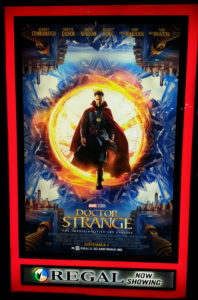 As described in my bio for the Big Words Blog Site, both my brother, Amahl Dunbar, and I are “Fanboys” and have a love of science fiction and superhero feature films such as those produced by DC and Marvel. In addition to having an abundance of books in our home at an early age, we both developed a love for comic books. These books were important tools for both of us continuing to learn how to read, speak, and even to think, imagine, and ponder subjects like science. While I ventured away from this love in high school when basketball became my love, and then later salsa dancing, Amahl never strayed from it. He even started exploring the worlds of animation and visual effects, and eventually contributed to the production of the film The Space Detective produced by the Swamp Media Group.
As described in my bio for the Big Words Blog Site, both my brother, Amahl Dunbar, and I are “Fanboys” and have a love of science fiction and superhero feature films such as those produced by DC and Marvel. In addition to having an abundance of books in our home at an early age, we both developed a love for comic books. These books were important tools for both of us continuing to learn how to read, speak, and even to think, imagine, and ponder subjects like science. While I ventured away from this love in high school when basketball became my love, and then later salsa dancing, Amahl never strayed from it. He even started exploring the worlds of animation and visual effects, and eventually contributed to the production of the film The Space Detective produced by the Swamp Media Group.
His sticking with it actually allowed me to come back to the comic book/science fiction world in my early 30s when he turned me on to DC’s classic graphic novel, Kingdom Come, written by Mark Waid; featuring the brilliant illustrations of Alex Ross. I loved that book and had never seen anything like it. Amahl also shared DC’s The Watchmen with me prior to the movie adaptation. I also have a copy of the Dark Knight Returns which I’ve yet to read because of my busy schedule.
Over the years we’ve developed a ritual of watching these movies, sometimes independently and sometimes together, and then convening afterwards to discuss what we saw and thought of that particular film. Our debriefing sessions are either in person or on the phone, but we have them nonetheless. We’ve thus decided to try our hands at conducting our very first movie review for publication. The movie is Marvel’s Dr. Strange starring Benedict Cumberbatch. The following is our candid review, thoughts and reflections on Marvel’s latest film.
Anwar: Well Bro, I’ll start this off and we’ll just see where it goes. As you know, when we were younger, I was more of a DC guy and was heavily into Batman and the Justice League International. G (our best friend Gabriel Smith), was more of a Marvel guy. In fact, I remember him always going on and on about Captain America. You were kind of a jack of all trades with knowledge of both the DC and Marvel universes, and amazingly, you sat in the middle with knowledge of both. I’m saying this to say that aside from Spiderman, who was heavily featured in numerous TV cartoon series throughout our youth, and even The Electric Company back in the 70s and early 80s (snippets with real life actors), much of what I know about Marvel and its characters today, I’ve learned through their movies. And I love The Avengers films. I would say Robert Downey, Jr., as Tony Stark/Iron Man, is my favorite character. Indeed, their entire cast of actors and characters is stellar.
I’d heard of Dr. Strange and seen images of him, but I didn’t really know what to expect when I walked into the theatre other than the fact that there would probably be an Easter Egg at the end of the movie – a hallmark of the Marvel movies, in addition to cameos by Stan Lee. We both saw the movie, but can you give an overview of the story? To any readers, if you haven’t seen it yet, you might want to stop reading here. This might spoil it for you.
Amahl: Sure. Marvel’s latest film offering is Doctor Strange, a blend of Jedi-style sorcery, with world shifting special effects. Benedict Cumberbatch leads an ensemble cast as Dr. Stephen Strange, an elite trauma surgeon who becomes a magic wielding superhero. The film has the typical hero’s journey similar to The Matrix or Harry Potter. Cumberbatch is smart not to play Dr. Strange in the same way that Robert Downey, Jr. plays Tony Stark. The mature cast seemed specifically chosen for their ages and educated appearances.
Dr. Strange’s photographic memory and speed reading ability allow him to move through his sorcerer training at an accelerated rate. If you’ve ever met someone who can speed read or has a photographic memory, you realize how special they are because they can operate at almost a computer-like level. These two attributes allow Dr. Strange to quickly become a powerful sorcerer.
The role of the mystic teacher is brilliantly played by Tilda Swinton, as The Ancient One. She steals every scene she’s in with clever philosophy, comedy, and good hearted unpredictability – the unpredictability that’s required to keep adult students, like Strange, interested in learning. Swinton’s Ancient One is as good a science fiction mentor as Morpheus, Yoda, or Obi Wan Kenobi in the Matrix and Star Wars franchises. She takes her mentorship one step further than other mentors by telling Strange and the audience exactly what he needs to do to be great versus good.
Anwar: Interesting. What stood out to you about the film? For me much of the imagery and special effects reminded me of Inception, starring Leo DiCaprio – with the moving and shifting scenery and landscapes. The costumes and the whole sorcery piece reminded me of the movie The Last Airbender. I also recognized some of the characters from Spiderman: The Animated Series from the late 1990s such as Mordo, portrayed by Chiwetel Ejiofor and Dormammu, voiced by Jonathan Adams, the ultimate antagonist of the film. I really liked the travel through the dimensions, and seeing Dormammu initially was definitely pretty scary with the two ominous eyes in space-time looking on.
Amahl: I think you hit several of the main points. What stood out to me is how these sorcerers were presented, and knowing that Dr. Strange would eventually join the Avengers or help them. Again, these sorcerers were portrayed kind of like the Jedi. Dr. Strange was likened to Obi-Wan Kenobi without a light saber. Their manner of dress had an Asian nod to it. They were not just sorcerers, but also martial artists as well. Typically when you see Dr. Strange, he’s always wearing his red cloak. Seeing him without the cloak, underneath it looks like a Jedi-like costume. So there was a lot of thought given to what they were going to wear and how they were going to be perceived – not as Harry Potter-type sorcerers or like witches and wizards from other franchises, but a very specific kind of a warrior-sorcerer look.
Anwar: I had to get used to seeing Benedict Cumberbatch as a hero because I’m used to seeing him play a villain, such as when he played Kahn in Star Trek: Into Darkness, or playing some kind of high-ranking government operative/spy/politician. It was similar to when I first saw Robert Downey, Jr. portray Tony Stark/Iron Man. It was like, ‘Wow. Robert Downey, Jr. is a hero.’ I was used to seeing him play so many other things – especially in the 1980s in comedic teen movies like Weird Science, and then later as a villain in US Marshals.
Amahl: Absolutely.
Anwar: I also had to adjust to watching Cumberbatch exhibit humor. In every Marvel movie there’s usually huge element of humor in their scripts, though I wasn’t used to seeing Dr. Strange being absent minded at times, and trying to be funny and witty. I won’t give it away, but his solution to stopping Dormammu was definitely creative, and funny.
Not long ago, we also talked about the fact that in the comic books, Dr. Strange has more of a Latino or Asian look. Is that correct?
Amahl: Some friends of mine who know more about the Marvel Universe than I do, told me months ago that the character is supposed to be Latino, which gives a whole new perspective to viewing the film – knowing that the character in the comic book is Latino versus the character in the movie being European or British. That’s not to say that the movie wasn’t good – it would’ve just given the movie a completely different spin – seeing that character played by Michael Peña who was actually in Antman or Philip De Blanc – any good looking Latino actor – it would’ve given a completely different vibe to the movie.
Anwar: As I was watching the film, I noticed that The Ancient One told Dr. Strange that The Avengers were the guardians of the non-mystical world and they themselves were the guardians of the mystical world, and I was in fact wondering if this particular story would fold into the upcoming Infinity War. As per usual Marvel gave a nice Easter Egg during the credits and it turns out that it is going to be a part of the larger story that the Marvel Cinematic Universe is constructing – they’re all going to come together at some point and they’re all going to fight Thanos, I would imagine.
Amahl: There’s also a shot of the Avengers’ Mansion at the beginning of the movie. I think the movie opens with Dr. Strange in surgery where he practices medicine. In the following scene when they show him getting ready to go to the party, there’s a push-in shot in the city and you see the Avengers’ Mansion in the mid-ground. It’s not in the foreground, nor in the background. It’s in the mid-ground and it’s large enough for you to see it. And that push- in shot goes into Strange’s apartment and it shows that he actually lives close to the Avengers’ Mansion.
Anwar: As per usual with these little details, I completely missed that. Okay Bro, I think that wraps up this review. You have a lot of experience working with visual effects, and you’re currently working on your own Superhero trailer right? How long have you been doing that?
Amahl: Well, I have been working on a Justice League trailer probably for about two years in my spare time. Most of it has been during mornings and early afternoons before I go to work while I’m either eating breakfast or lunch. During those times I figure that the 10-15 minutes that I’m actually eating is time that I can do this; it’s the best time for me to work on it. It involves ripping footage from DVDs, organizing the footage, and editing it down to shots. I’ve had to figure out which shots from these movies to use – the Christopher Reeve Superman movies, the Michael Keaton Batman movies, some of the latest Christian Bale Dark Knight movies, and finally Lynda Carter’s Wonder Woman television series.
I’ve taken shots from each of these movies and shows, and I’m going to try to tell a narrative through a trailer. The trailer could also be viewed as a “Visual Treatment”. A “Treatment” in Hollywood is basically a description by paragraph of what a movie or TV show would actually be. You can view this trailer as a treatment – of what my ideas would be for a Justice League movie. I’ve included some of my own visual effects, and there is also some 3-D animation so that every shot that you see isn’t directly pulled from a movie. Some of the shots have actually been edited or enhanced to further tell the narrative that I’m going for.
Anwar: When it’s completed it will be on your YouTube channel?
Amahl: Absolutely.
Anwar: And will people be able to access that through you Twitter page?
Amahl: Yes, the links will be available in places where people can easily see them. I’m actually looking forward to connecting with some Comic Book stores here in the Buffalo area and saying, ‘I’m a local artist and I think you would find this very interesting. Here is the link. If you like it, share it with your customer base.’
Anwar: Making trailers is actually a pretty big deal on YouTube. There are people making trailers and videos about their favorite franchises just for the hell of it, and sometimes leading up to the release of the next movie. A lot of fan trailers were made leading up to Star Wars Episode III: Revenge of the Sith, for example, and that’s very impressive.
Amahl: Absolutely. If fans have their own episodes or even make their own movies, this is a new way for them to show their appreciation for the franchises. It’s not just, ‘I’ll buy a movie or I’ll buy a t-shirt or I’ll buy a DVD collection of the show,’ but fans can show their appreciation of the franchise by making their own short videos.
Anwar: Well Bro, I guess that wraps it up. Hopefully, there are some readers who enjoyed this. Star Wars: Rogue One is actually coming out in a couple of weeks. We’ll have to reconvene and talk about that one after we see it as well. What’s your twitter handle just in case other enthusiasts want to follow and interact with you?
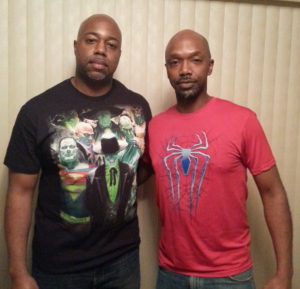 Amahl: It’s @amahldunbar.
Amahl: It’s @amahldunbar.
Anwar: I also have a personal twitter handle, but I’m trying to grow a following for Big Words so I’m going to offer up @BWArePowerful. If you’ve read this review and like it, please do leave comments and I’ll respond. It could be something as simple as saying that you enjoyed our discussion. Thank you and we’re signing off.
Thank you for taking the time read our review. You may also enjoy:
• A review of Marvel’s Black Panther
• A review of Marvel’s Thor: Ragnarok
• A review of Marvel’s Spider-Man: Homecoming
• A review of Marvel’s Dr. Strange
• A review of Hidden Figures
• A review of All Eyez on Me
If you’ve found value here and think it would benefit others, please share it and/or leave a comment. To receive all of the most up to date content from the Big Words Blog Site, subscribe using the subscription box in the right-hand column in this post and throughout the site or add the link to my RSS feed to your feedreader. Please visit my YouTube channel entitled, Big Discussions76. You can follow me on the Big Words Blog Site Facebook page, and Twitter at @BWArePowerful. Lastly, you can follow me on Instagram at @anwaryusef76. While my main areas of focus are Education, STEM and Financial Literacy, there are other blogs/sites I endorse which can be found on that particular page of my site.


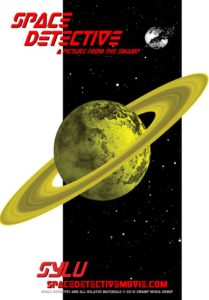 We added this crazy element of it being in the future, essentially in a galactic community. So rather than our story taking place in some hard-boiled American city, it takes place on this space station called ‘Carina Dawn’ which is floating out in the middle of nowhere close to the
We added this crazy element of it being in the future, essentially in a galactic community. So rather than our story taking place in some hard-boiled American city, it takes place on this space station called ‘Carina Dawn’ which is floating out in the middle of nowhere close to the 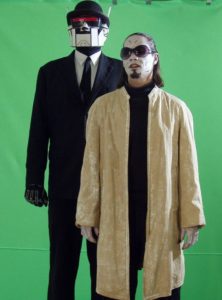 AL: But the basic plot of the movie is that Shiro (the protagonist) gets a phone call from his ex-girlfriend. She says, “Come back to Carina Dawn. I need some help getting away from my gangster husband. He’s not good.” And essentially that’s it. He’s going to help this girl get away from her gangster husband and he gets mixed up in a crazy plot involving space terrorists, mobsters and the fate of the galaxy.
AL: But the basic plot of the movie is that Shiro (the protagonist) gets a phone call from his ex-girlfriend. She says, “Come back to Carina Dawn. I need some help getting away from my gangster husband. He’s not good.” And essentially that’s it. He’s going to help this girl get away from her gangster husband and he gets mixed up in a crazy plot involving space terrorists, mobsters and the fate of the galaxy.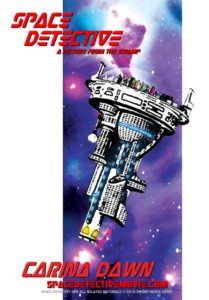 MS: I’m really big on
MS: I’m really big on 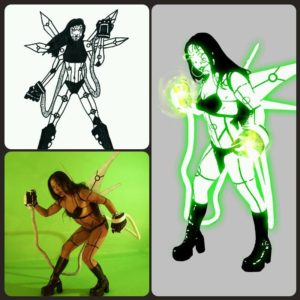 AL: Oh yes, this is all us, man. That’s something that we cooked up. There’s a similar technique they use called roto-scoping where they will trace over actors to creates an animated look. We didn’t do that. We did everything in camera. We put makeup on our actors – almost kabuki style. The style of film is very striking – we shot it in front of a green screen and then we put that in the computer and processed it a little bit. We adjusted the contrast, the black and white levels, but its still actors and we didn’t change it that much. We’re just doing a visual crunch, if you will, on their images. We use a lot of puppets too.
AL: Oh yes, this is all us, man. That’s something that we cooked up. There’s a similar technique they use called roto-scoping where they will trace over actors to creates an animated look. We didn’t do that. We did everything in camera. We put makeup on our actors – almost kabuki style. The style of film is very striking – we shot it in front of a green screen and then we put that in the computer and processed it a little bit. We adjusted the contrast, the black and white levels, but its still actors and we didn’t change it that much. We’re just doing a visual crunch, if you will, on their images. We use a lot of puppets too.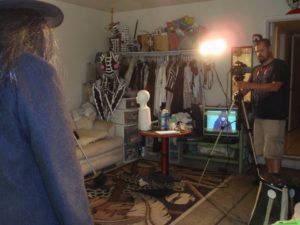 AL: Yes, so to describe the visual aesthetic of the movie, everything in
AL: Yes, so to describe the visual aesthetic of the movie, everything in 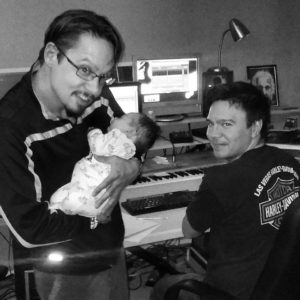 MS: My brother, Marcus, is a classically trained musician. He played in the
MS: My brother, Marcus, is a classically trained musician. He played in the 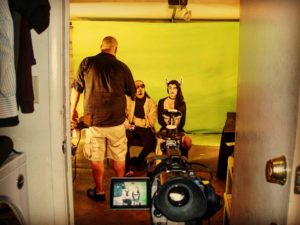 AL: I agree with Matt. We learned that we can do it. I was always scared of directing growing up. I would say, “I can’t come up with all of these shots. I don’t know what I’m doing.” But I actually do know what I’m doing. I’m pretty good at it, and Matt’s pretty good at it. I’ve learned that I think directing is probably the hardest thing that anyone can possibly do. It is the playing soccer of art making. It is all about endurance. It is all about not giving up. It’s about trying to con your friends into doing insane things, and then trusting them. It’s about leadership and a lot of other things.
AL: I agree with Matt. We learned that we can do it. I was always scared of directing growing up. I would say, “I can’t come up with all of these shots. I don’t know what I’m doing.” But I actually do know what I’m doing. I’m pretty good at it, and Matt’s pretty good at it. I’ve learned that I think directing is probably the hardest thing that anyone can possibly do. It is the playing soccer of art making. It is all about endurance. It is all about not giving up. It’s about trying to con your friends into doing insane things, and then trusting them. It’s about leadership and a lot of other things.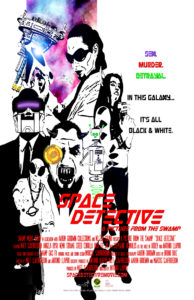 AD: Well gentleman, thank you both for this interview. I look forward to seeing
AD: Well gentleman, thank you both for this interview. I look forward to seeing 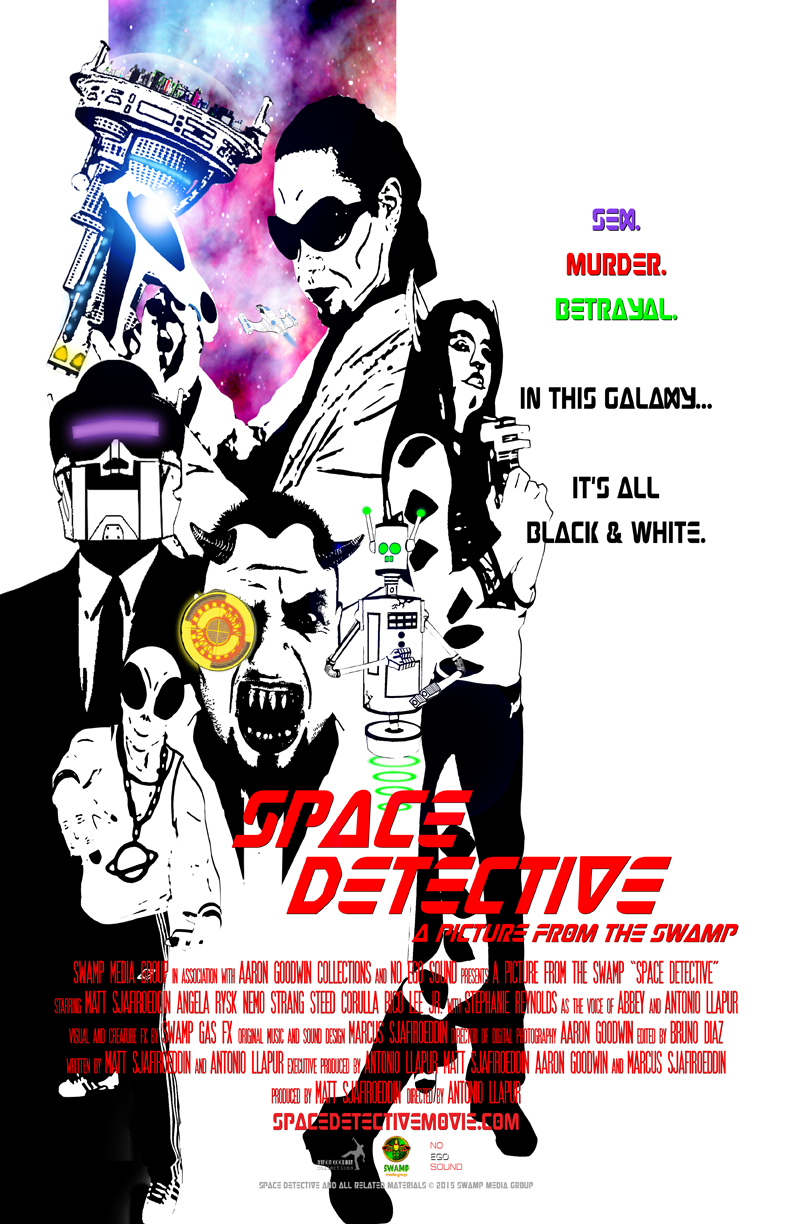
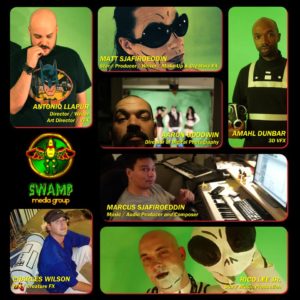 MS: It’s funny because we’ve been roommates for a while. We live in a house now and we used to live in an apartment. We used to call our place ‘The Swamp’. Do you remember the Television show
MS: It’s funny because we’ve been roommates for a while. We live in a house now and we used to live in an apartment. We used to call our place ‘The Swamp’. Do you remember the Television show 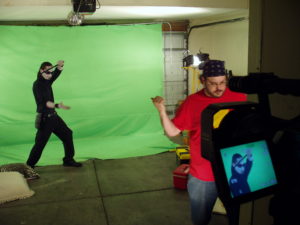
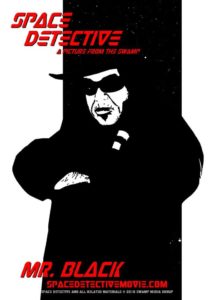 AL:
AL: 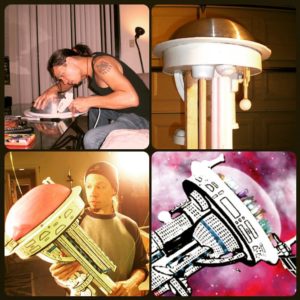 MS: Well, we had just recently finished production of one of our other short films called,
MS: Well, we had just recently finished production of one of our other short films called, 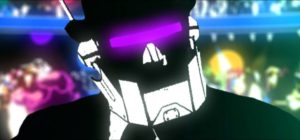 MS: We’ve joked that this film has been like our graduate school education in that we’ve had to do so much of it ourselves from the writing, to the acting, to the directing, the special effects, the practical effects, the sound, the music – we had to do so much of it ourselves in this tight group of us. It felt like graduate school you know because we learned some of this stuff in college, but until you actually apply it to something, it’s all theory. So making this movie has really helped us hone our skills as film makers and storytellers.
MS: We’ve joked that this film has been like our graduate school education in that we’ve had to do so much of it ourselves from the writing, to the acting, to the directing, the special effects, the practical effects, the sound, the music – we had to do so much of it ourselves in this tight group of us. It felt like graduate school you know because we learned some of this stuff in college, but until you actually apply it to something, it’s all theory. So making this movie has really helped us hone our skills as film makers and storytellers.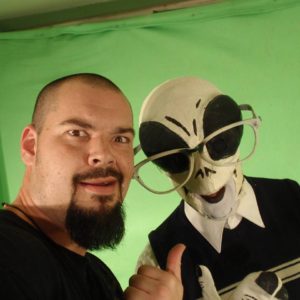 So we just said, “Okay, let’s just keep at it”. We got to point where people said, “Hey, we’d like to invest”, but we had come so far and we’re going to finish it ourselves (laughing). So we own all of it. We paid for all of it and now we have an executive producer to help us with the Post and the Film Festival. He was our cameraman, Aaron Goodwin. He’s on the show
So we just said, “Okay, let’s just keep at it”. We got to point where people said, “Hey, we’d like to invest”, but we had come so far and we’re going to finish it ourselves (laughing). So we own all of it. We paid for all of it and now we have an executive producer to help us with the Post and the Film Festival. He was our cameraman, Aaron Goodwin. He’s on the show 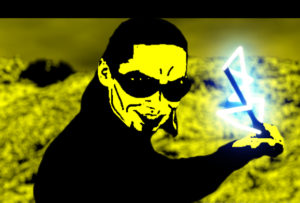 MS: Yes, we started this so long ago that it was before Crowd Funding and
MS: Yes, we started this so long ago that it was before Crowd Funding and  MS: It’s funny, because people would always ask us, “What is this about?” And the title tells you.
MS: It’s funny, because people would always ask us, “What is this about?” And the title tells you.